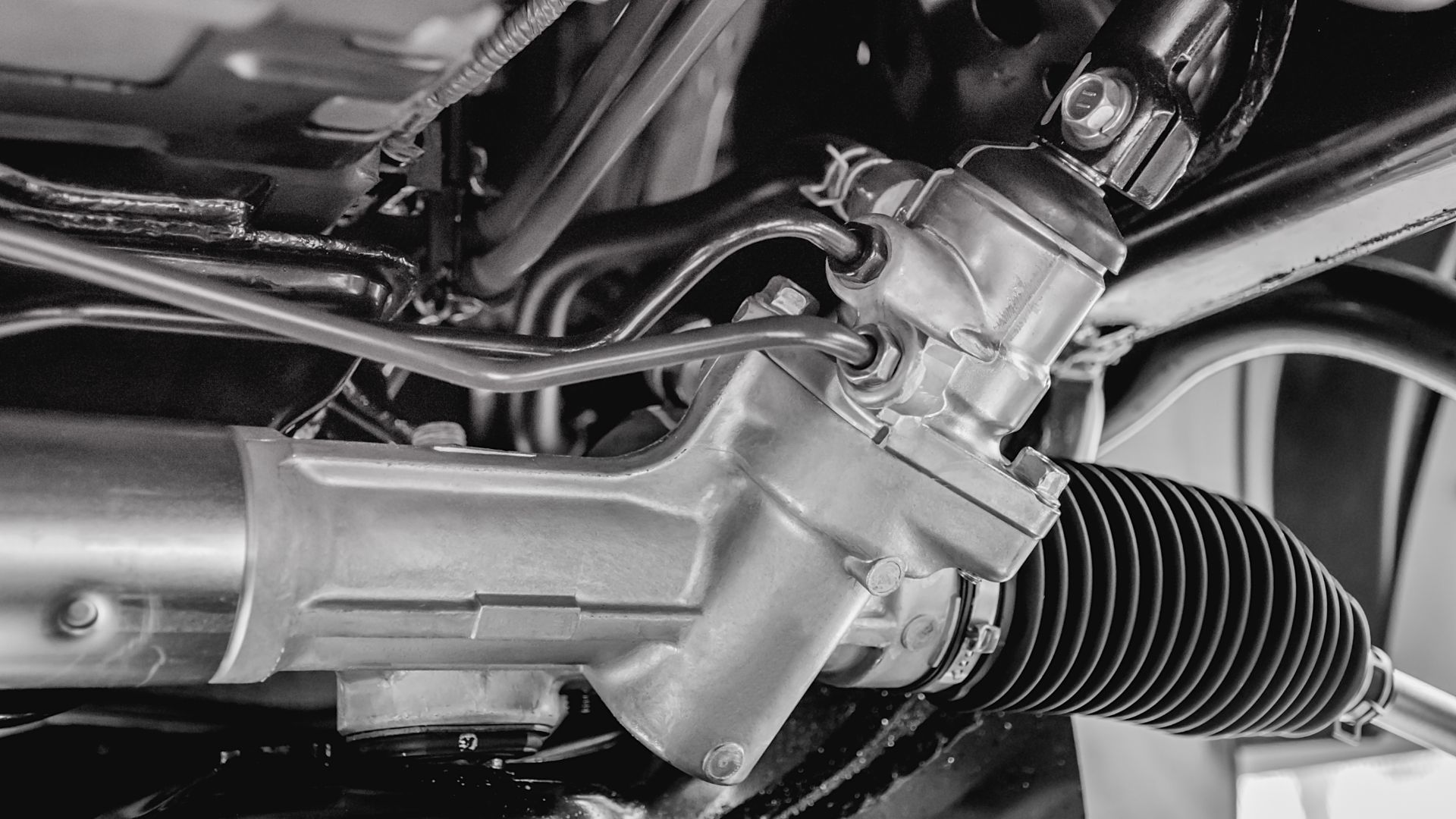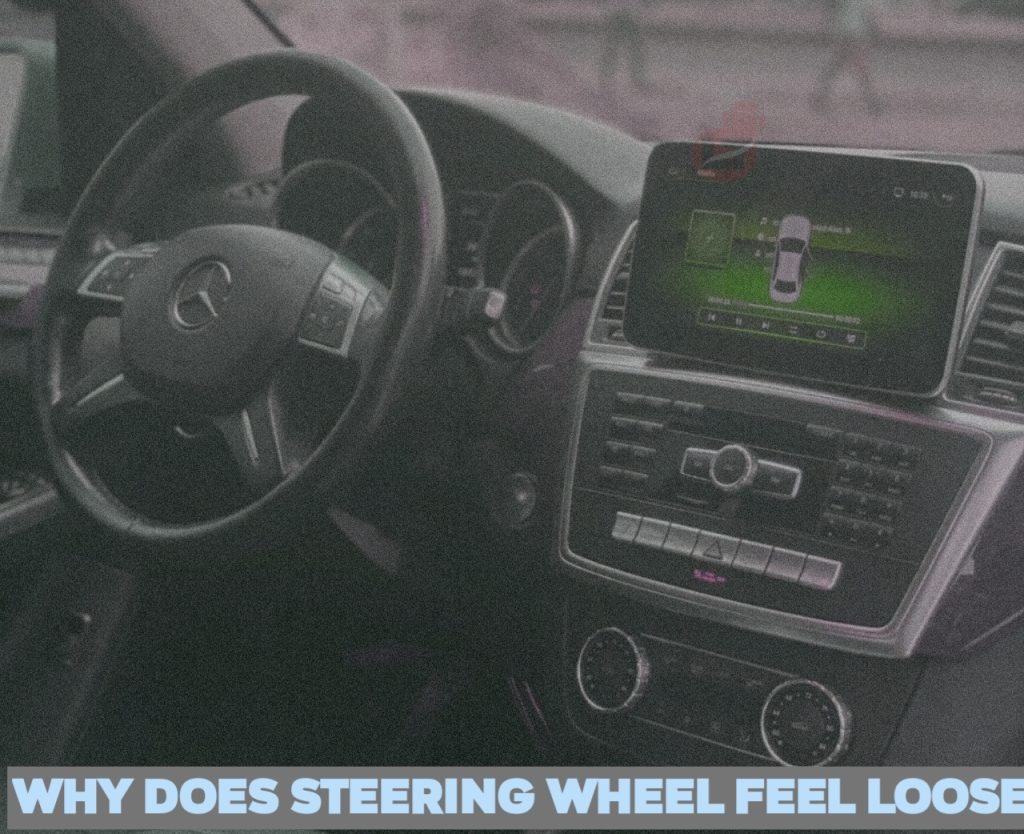Why Is There So Much Play in My Steering Wheel? It’s a question that can send shivers down the spine of any driver. A loose steering wheel, beyond a simple annoyance, can be a serious safety hazard. It can indicate worn or damaged components in your steering system, leading to unpredictable handling and reduced control. This can be especially dangerous at high speeds or in emergency situations.
The play in your steering wheel could be due to several factors, from worn-out bearings and loose bolts to a damaged steering box or worn-out tie rod ends. Identifying the source of the play is crucial for ensuring your safety and preventing further damage to your vehicle.
Causes of Steering Wheel Play
A loose steering wheel, characterized by excessive play or movement, can be a disconcerting issue, impacting both safety and driving comfort. This phenomenon is usually indicative of underlying mechanical problems that require attention. It’s crucial to identify the root cause of the play to ensure a safe and responsive driving experience.
Components Involved in Steering Wheel Play
The steering system, responsible for directing the vehicle, comprises several interconnected components that can contribute to steering wheel play. These components, subjected to constant use and wear, can become loose or damaged, leading to the undesirable play in the steering wheel.
- Steering Column: This central component connects the steering wheel to the steering gear, transmitting the driver’s input. Over time, the steering column’s bearings, bushings, or joints can wear out, leading to play.
- Steering Gear: The steering gear, often a rack and pinion system, converts the rotational motion of the steering wheel into linear motion for the steering linkage. Worn gears, loose mounting bolts, or damaged seals can contribute to steering wheel play.
- Steering Linkage: This system of rods and joints connects the steering gear to the front wheels. Wear and tear in the tie rods, ball joints, or other linkage components can cause excessive play in the steering wheel.
- Suspension Components: While not directly involved in steering, suspension components such as worn control arm bushings or loose ball joints can indirectly contribute to steering wheel play by affecting the vehicle’s alignment and stability.
Identifying the Source of Play

Once you’ve established that there’s play in your steering wheel, the next step is to pinpoint the culprit. This involves a careful visual inspection and some targeted tests to isolate the component responsible for the unwanted movement.
Visual Inspection
A thorough visual inspection can often reveal the source of the problem. Start by examining the steering column, looking for any signs of damage, wear, or looseness. Pay close attention to the universal joint, which connects the steering column to the steering box. Look for cracks, excessive wear, or missing lubrication. Next, move on to the steering box itself.
Inspect the mounting bolts for any signs of looseness or damage. Also, check the steering box linkage for any signs of wear or damage.
Testing for Play, Why is there so much play in my steering wheel
To accurately assess the play in your steering wheel, you’ll need a helper. Have your helper hold the steering wheel straight while you gently move the steering column back and forth. You can also use a tool like a steering wheel lock to keep the wheel stationary.
Determining the Source of Play
Once you’ve identified the source of the play, you can start to narrow down the possible culprits. If the play is in the steering column, it could be due to a worn universal joint, loose mounting bolts, or a damaged steering shaft. If the play is in the steering box, it could be due to worn gears, a loose input shaft, or a damaged output shaft.
Safety Implications of Steering Wheel Play

Steering wheel play, while seemingly minor, can pose significant safety risks. Excessive play can lead to a loss of vehicle control, particularly in critical driving situations. It is crucial to understand the potential dangers associated with steering wheel play and take appropriate action to address any issues promptly.
Impact on Vehicle Control and Handling
Steering wheel play directly affects the driver’s ability to control the vehicle’s direction. The play creates a delay between the driver’s steering input and the vehicle’s response. This delay can be particularly dangerous in situations requiring precise steering, such as:
- Lane Changes: Steering wheel play can make it difficult to maintain a smooth and controlled lane change, potentially leading to swerving or colliding with other vehicles.
- Cornering: Excessive play can make it challenging to maintain a consistent and predictable steering angle, increasing the risk of understeer or oversteer, potentially resulting in loss of control and a collision.
- Emergency Maneuvers: In emergency situations, a quick and precise steering response is critical. However, steering wheel play can hinder the driver’s ability to react quickly and effectively, potentially leading to a collision.
Risks in Different Driving Scenarios
Steering wheel play can pose specific risks depending on the driving environment and conditions.
- High-Speed Driving: At higher speeds, even a small amount of play can amplify the impact on vehicle control, making it more difficult to maintain a straight path and increasing the risk of losing control.
- Slippery Surfaces: On wet or icy roads, steering wheel play can make it extremely challenging to maintain control, as the delayed response can make it difficult to correct for any loss of traction.
- Off-Road Driving: In off-road conditions, where uneven terrain and obstacles are common, steering wheel play can hinder the driver’s ability to navigate effectively, potentially leading to damage to the vehicle or injury to the driver.
Impact on Tyre Wear
Steering wheel play can also lead to uneven tyre wear. When the steering wheel has play, the wheels may not be aligned correctly, resulting in uneven tyre wear, especially on the front tyres. This can reduce tyre life and increase the risk of a blowout.
Safety Recommendations
It is crucial to address steering wheel play promptly. If you notice any play in your steering wheel, it is essential to have it inspected by a qualified mechanic. They can diagnose the cause of the play and recommend appropriate repairs. Driving with excessive steering wheel play can be dangerous, and it is better to be safe than sorry.
Prevention and Maintenance

Steering wheel play, while often a minor annoyance, can be a symptom of underlying issues that could compromise your safety. Regular maintenance is key to preventing this problem and ensuring your vehicle handles as intended.
Importance of Regular Maintenance
Regular maintenance is the most effective way to prevent steering wheel play. This involves inspecting and adjusting various components of the steering system at specific intervals.
- Steering wheel and column: Inspect for any signs of wear, damage, or looseness. Tighten any loose bolts or nuts and replace worn-out parts.
- Steering linkage: Inspect for loose or worn-out components, including tie rod ends, ball joints, and control arm bushings. Replace any damaged or worn parts.
- Power steering fluid: Check the fluid level and condition regularly. Replace the fluid as needed.
Using High-Quality Steering Components
The quality of your steering components plays a crucial role in preventing steering wheel play.
- Original Equipment Manufacturer (OEM) parts: OEM parts are designed specifically for your vehicle and offer the best fit and performance.
- Aftermarket parts: While aftermarket parts can be more affordable, it’s essential to choose high-quality brands with good reputations.
Routine Inspections and Adjustments
Routine inspections and adjustments can help detect and address potential issues before they become major problems.
- Visual inspection: Regularly inspect your steering system for any signs of wear, damage, or looseness.
- Steering wheel play check: Check for excessive play in the steering wheel by gently shaking it back and forth.
- Alignment check: Have your vehicle’s alignment checked regularly, as misalignment can contribute to steering wheel play.
A loose steering wheel is not something to be ignored. While a little play might seem insignificant, it can quickly escalate into a serious safety issue. Regular maintenance and inspections are crucial for preventing this problem. If you notice excessive play in your steering wheel, it’s essential to have it checked by a qualified mechanic immediately. Don’t compromise your safety; get your steering system inspected and repaired as soon as possible.
Commonly Asked Questions: Why Is There So Much Play In My Steering Wheel
How much play is considered too much?
A general rule of thumb is that there should be no more than 1/4 inch of play in your steering wheel. Any more than that could indicate a problem.
Can I fix steering wheel play myself?
While some minor adjustments might be possible, it’s generally recommended to have a mechanic diagnose and repair any steering issues. They have the tools and expertise to ensure the job is done safely and correctly.
What are the signs of a worn-out steering box?
Signs of a worn-out steering box include excessive play in the steering wheel, a grinding noise when turning, and a feeling of looseness in the steering.
Can I drive with steering wheel play?
While it’s possible to drive with some play, it’s not recommended. It can make handling difficult and increase the risk of an accident. Have the issue addressed as soon as possible.